26 November 2012
Thomas Braida speaks little and paints a great deal. On canvas, on the pages of magazines, on plates and even on bathroom scales: in practice, on anything that comes within reach. As if he were unable to refrain from constantly giving substance to figures and landscapes as monstrous as they are familiar. They are the ones that surround us in our everyday reality – actual and virtual – and that he turns into timeless images. Born in Friuli Venezia Giulia thirty years ago, he lives in Venice, where he graduated from the Academy of Fine Arts, but recently has been thinking of emigrating somewhere else, together with his demon of painting. Perhaps to Milan, where, last June, he filled the unconventional exhibition space of Il Crepaccio to the brim with his work, attracting a lot of attention.
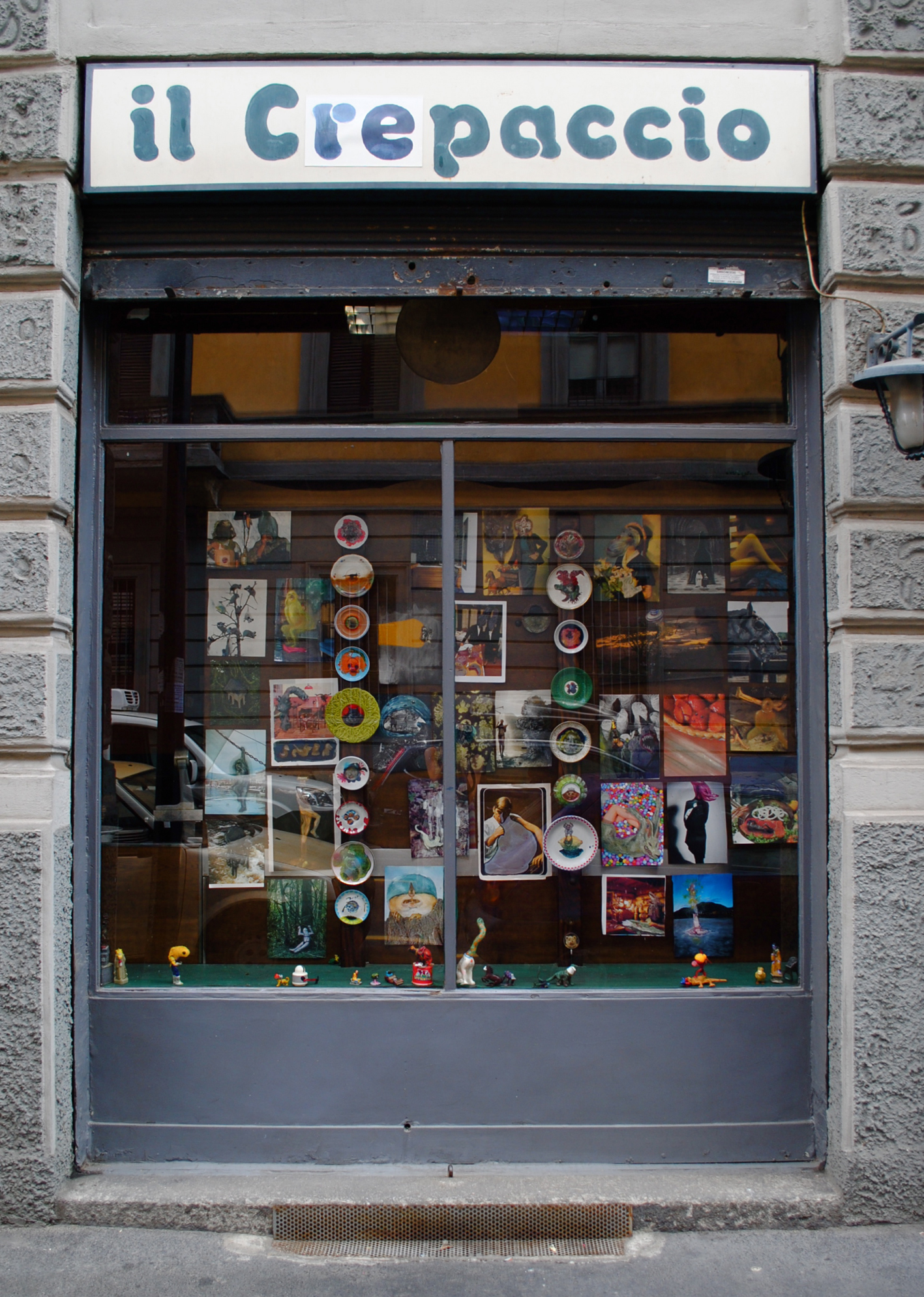
Installation by Thomas Braida for Il Crepaccio, Milan, 2012.
Thomas, how would you define yourself?
I’m a painter because I don’t know how to do anything else so well.
And how did you become one?
I tried to do something completely different, first, but I was never satisfied and always went back to painting. Then I enrolled in the academy and understood, finally, that that was what I had to do.
In what sense?
I tried playing music, then I wanted to be a barman, and I started to study mathematics. Yes, I don’t think I’m capable of doing anything better than I paint. But I would have survived without it. Better or worse, I don’t know.
What environment did you grow up in?
My father was a teacher of art history and an artist for the love of it. He mostly made sculptures. I can say that I grew up in a climate in which being creative was the norm.
What does it mean, for you, being creative?
Constructing and inventing games, for example, with whatever is at hand, even out of nothing.
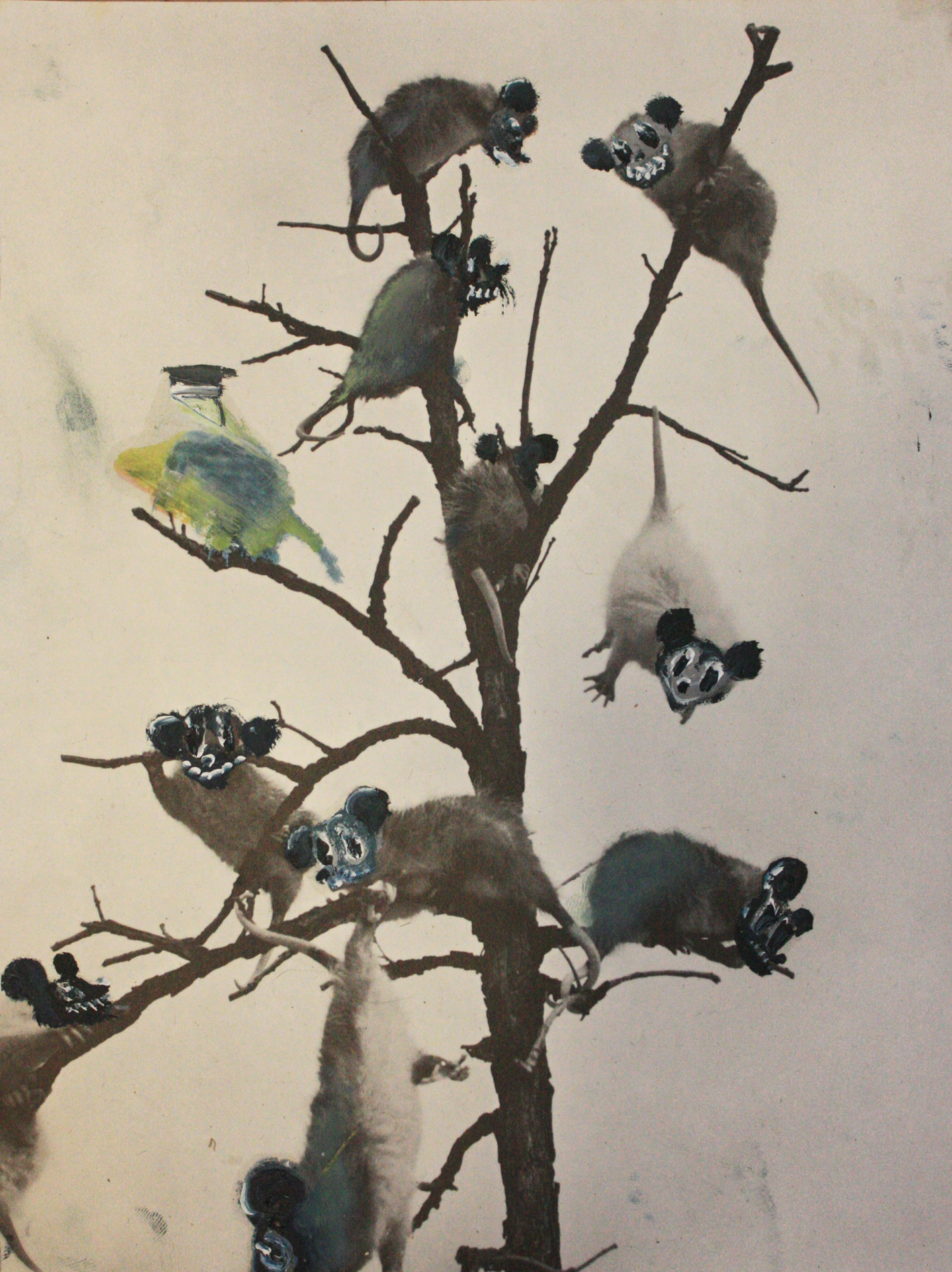
Thomas Braida, Topolini, 2012.
Seeing that you grew up in a creative environment, you must have started early: do you remember your first work?
Yes, I was at elementary school, and I made a drawing which even I couldn’t understand how I was able to do it: it was better than me.
How many hours a day do you spend drawing and painting now?
It depends, as much as eight or twelve hours. Or none at all. On average I’d say four hours, but every day I have to do something, at least one drawing.
And when you’re not working what do you do?
I’m very good at idling too. I like to cook, go for walks and when I’m back in Friuli I tend the vegetable garden or ride around on my bike.
Where do you get the inspiration for the subjects of your works?
From everything I see. Absolutely everything.
Even if your works based on your observation of reality, in my view there is a powerful process of translation of these stimuli through your imagination.
It’s true. Everything, through my hand, is transformed and goes beyond reality. And becomes even more true.
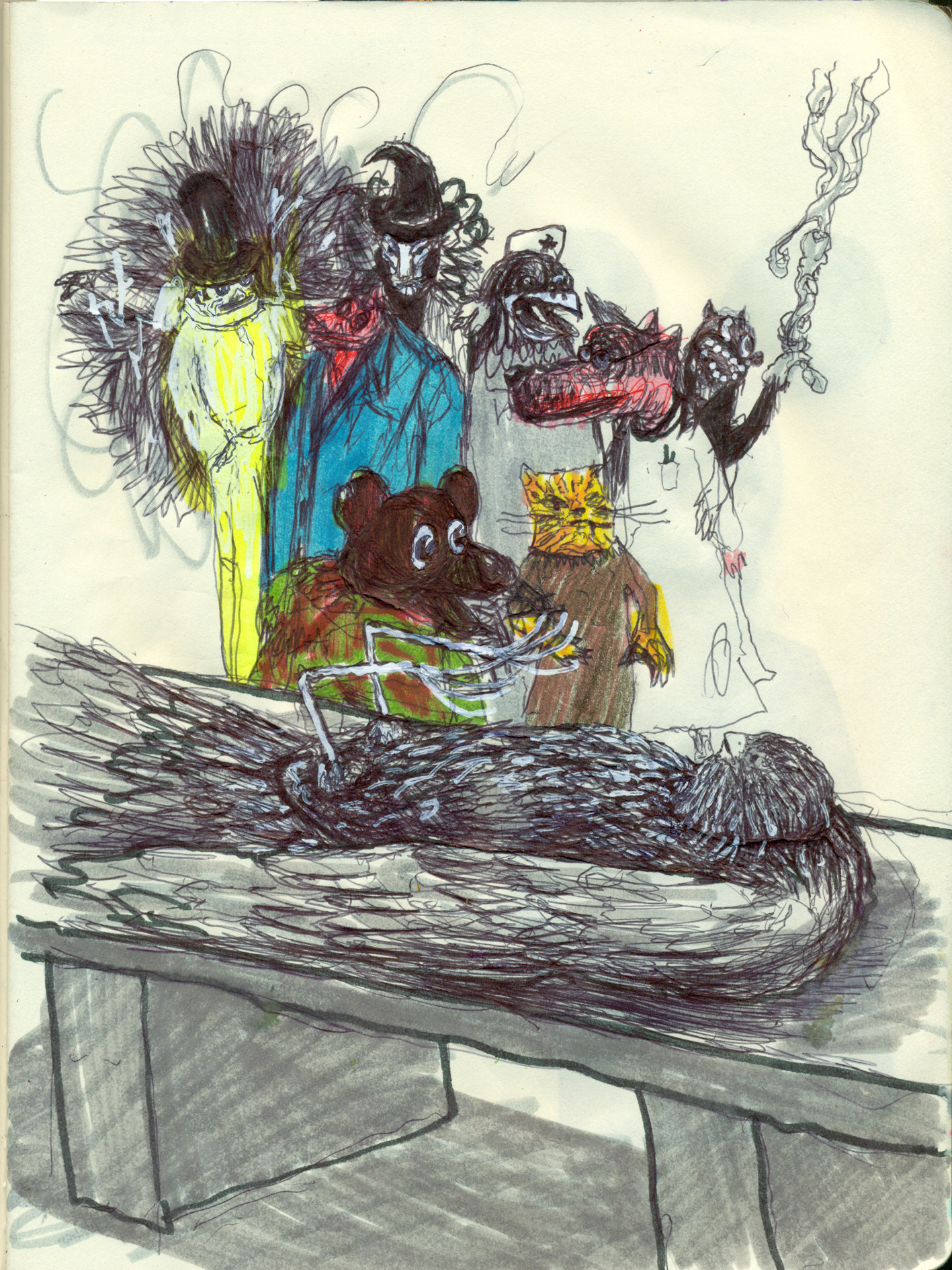
Thomas Braida, Saluto alla salma, 2012.
I saw your work for the first time when I was on the jury of the 94th Young Artists Collective, Bevilacqua la Masa prize, at the end of 2010. In particular, the series I tappi1 (2010): grotesque characters painted in oil on lids for jars of various sizes. I was moved by this portrayal – unassuming in its means but of a great intensity – of a monstrous and desperate humanity, and I was also struck by its provocative difference from what was proposed by the other artists in that context (and not just that one). And then they were accompanied by these words of yours: “The importance and the beauty of diversity try to find expression through quite ordinary lids (which can also be understood as not very tall people1), as small cameos or old souvenir photos of deformed people, much more like animals, Monsters-Gods-Strugglers, odd and disturbing beings, each of them peculiar but filled with contradictory beauty.” What is your definition of beauty?
Diversity is beauty. Something beautiful you “feel” right away and, perhaps, understand later. It’s an act of love, art. And so is understanding diversity.
With all the books on art history that, I imagine, were lying around in your house, were there artists or works that made an impression on you and shaped your artistic sensibility? It is not hard to make out in your works references to painting of the past and the present, from Condo to Ensor, and not them alone. As soon as we met, I told you that your work reminded me of Nathalie Djurberg’s because of the similar combination of grotesque and sublime elements, because the capacity you both have to represent just that, the perverse beauty of diversity. And you also share a creative urgency.
Yes, there were books on art history, but I didn’t look at them with much interest. I preferred illustrated books on prehistoric times. Those really do fire the imagination. Condo I don’t like, but Djurberg I certainly do. Then John Bock. Modern African art in general is very powerful. But for me images all have the same value when seen in books or on the web, whether they’re beautiful or not. From life, that’s quite another thing. When I was small, I was really fascinated by the butterflies in display cabinets at the natural history museum in Vienna. I was three years old and I still remember them very well. Sometimes I think I would have liked to be a French poet along the lines of Verlaine. Or a painter like Grosz in Germany. But Goya too.
Another point in common between you and Nathalie… and myself: we are fans of Goya/siamo fan di Goya.You always describe yourself as a painter, and never an artist, but you also make sculptures, assembling simple objects of everyday use, on which you often intervene with color––and now that you’ve mentioned him, I have to say that they do remind me of some of the absurd assemblages created by John Bock during his performances. For you it’s still painting?
Yes, yes, everything is painting for me. It’s like something alive that independently wants to come out of the picture, that doesn’t give a shit about it. Everything is painting in the sense that I look at everything through color. That everything is made of color.
Have you ever thought of using other, manual media, like photography and video?
Yes, but I’m not capable of it. And technology hates me.
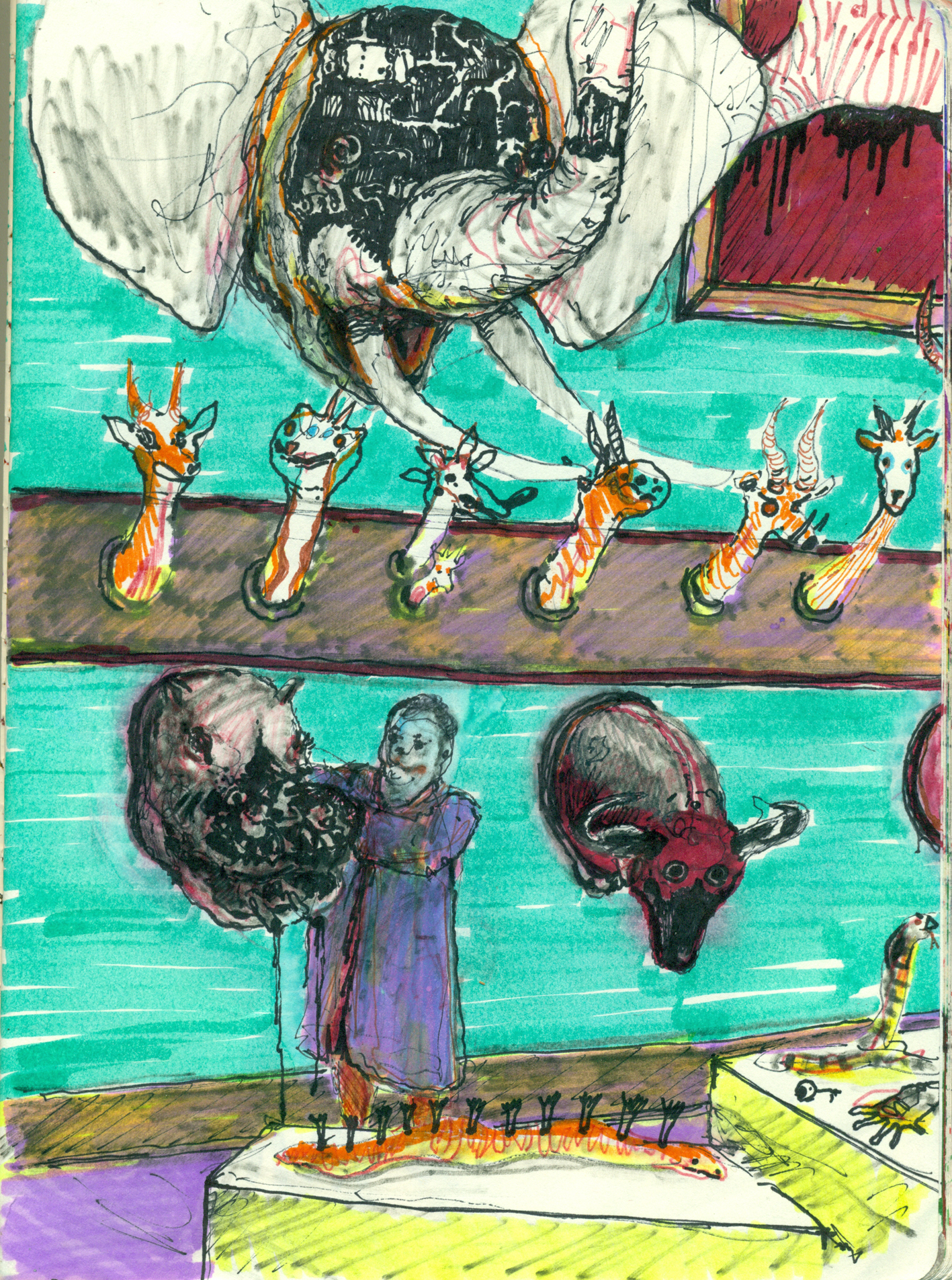
Thomas Braida, L’impagliatore, 2011.
And yet you have a fairly up-to-date website with a selection of your production, and you update, every day I’d say, the contents of your Facebook page. Speaking of which, how do you use it? To look at, it seems almost to be a digital version of your notebooks, where bizarre old pictures can be found alongside stills from very sophisticated films, portraits of Scilipoti2 and funny cats, stupid and gruesome photos found on the web…
Yes, it is in effect a book of digital notes and images, but I also use it to keep in touch with friends. As well as to slip a few perverse images onto Facebook.
As well as images, you put a lot of music on your Facebook page: from the soundtrack of Jodorowsky’s El Topo to Lady Gaga, by way of Glenn Miller. Is that what you listen to?
Yes, more or less. I put trash music on Facebook too that I don’t usually listen to, but that is OK every now and then.
What do you read?
Newspapers and novels. At the moment, for example, I’m reading The Name of the Rose, but I usually prefer science fiction. I like it a lot.
Yes, but you also read and quote Kurt Vonnegut, who wrote science fiction, but it’s great literature. I remember that in the application letter that you sent in for the LUM prize in 2011, at which I was one of the curators, you quoted a passage from Breakfast of Champions to clarify your position with regard to art and painting. I’ll quote another bit of the book back at you: “‘The painting did not exist until I made it,’ Karabekian went on. ‘Now that it does exist, nothing would make me happier than to have it reproduced again and again, and vastly improved upon, by all the five-year-olds in town. I would love for your children to find pleasantly and playfully what it took me many angry years to find.’” In the same letter you also spoke of “sincerity inherent in the work” and of “partly unconscious expression linked to my private sphere.” Does that mean that you identify with Vonnegut’s child-painters with their instinctual art and natural aggressiveness? Bataille said: “What are children if not animals becoming human?” In effect, children and animals do have in common a state of “pre-human unconsciousness” in which they certainly feel fear, but are free from an awareness of the finite nature of the human being, free from the unimaginable terror of death. Free to explore territories made taboo precisely by anxiety over death, like sex and violence.
Well yes, you have to be a bit “animal” to get at deeper feelings and understand how to let them come out with a brush in your hand.
You’re a man of few words, while your work is overflowing. You’re courageous (or should I say reckless?), in the sense that you don’t seem to be afraid of anything, and above all of exaggerating, when you work. You paint on anything, anything at all: not just the usual canvases, but also on the pages of magazines and various objects. And you draw continually in notebooks that you always carry around with you. It almost seems as if painting, or drawing, is something you can’t hold back, as if you were retching.
In my first year of high school I stopped using different notebooks for different subjects. I had one that I utilized for all the lessons, which in the end I filled mostly with drawings. When I finished school, I went on carrying one around. In the early notebooks I tried to write as well, but drawing was more immediate, a better outlet and expression of my thinking, which is not in words. Now the notebook is the basis of all my work.
Battezzare l’autovettura (Baptizing the Automobile), Il re porco in camera pensa (The Pig King in His Bedroom Thinking), Regolamento di conti dell’Augusto (Augustus’s Settling of Scores), Le tentazioni di Sant’Antonio (The Temptations of Saint Anthony) and Nel mare della tranquillità (In the Sea of Tranquility) are some of the highly evocative, surreal titles of your works. How and when do you decide on the title of a work?
When I finish a picture, I free up a bit of space between my ideas and perhaps talk to a friend, see a piece of film by chance or read a phrase on a poster. After “playing dominoes with ideas” a title occurs to me, which I then adjust and give to the picture.
What are you working on at present?
Large canvases with reinterpretations of ancient myths, including religious ones. In my own style, obviously.
And what would that be?
My style is doing things more or less as I please.
1 The Italian word tappo also means “shorty.” (Translator’s note)
2 A controversial Italian politician (Translator’s note)
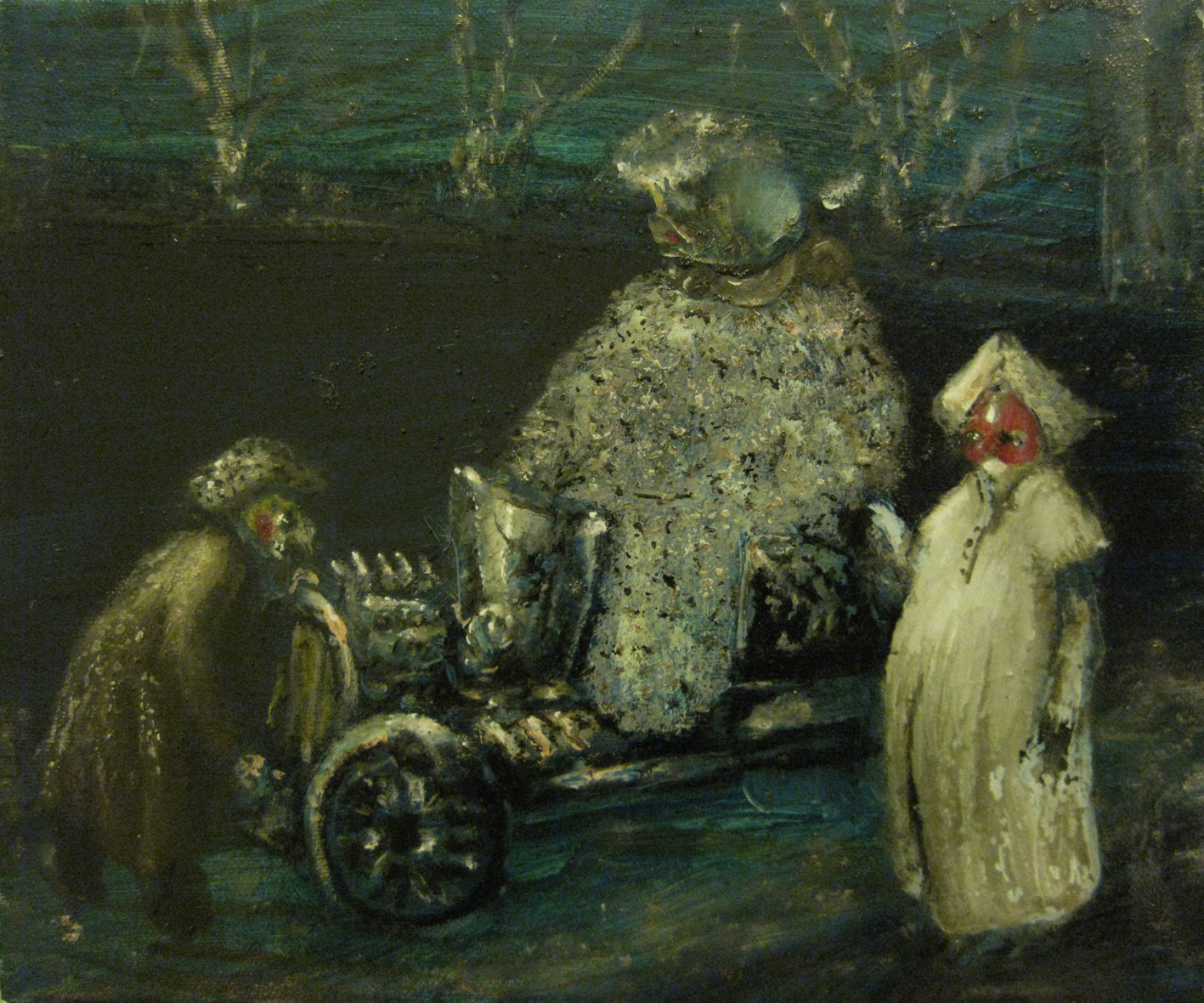
Thomas Braida, Battezzare l’autovettura, 2012.
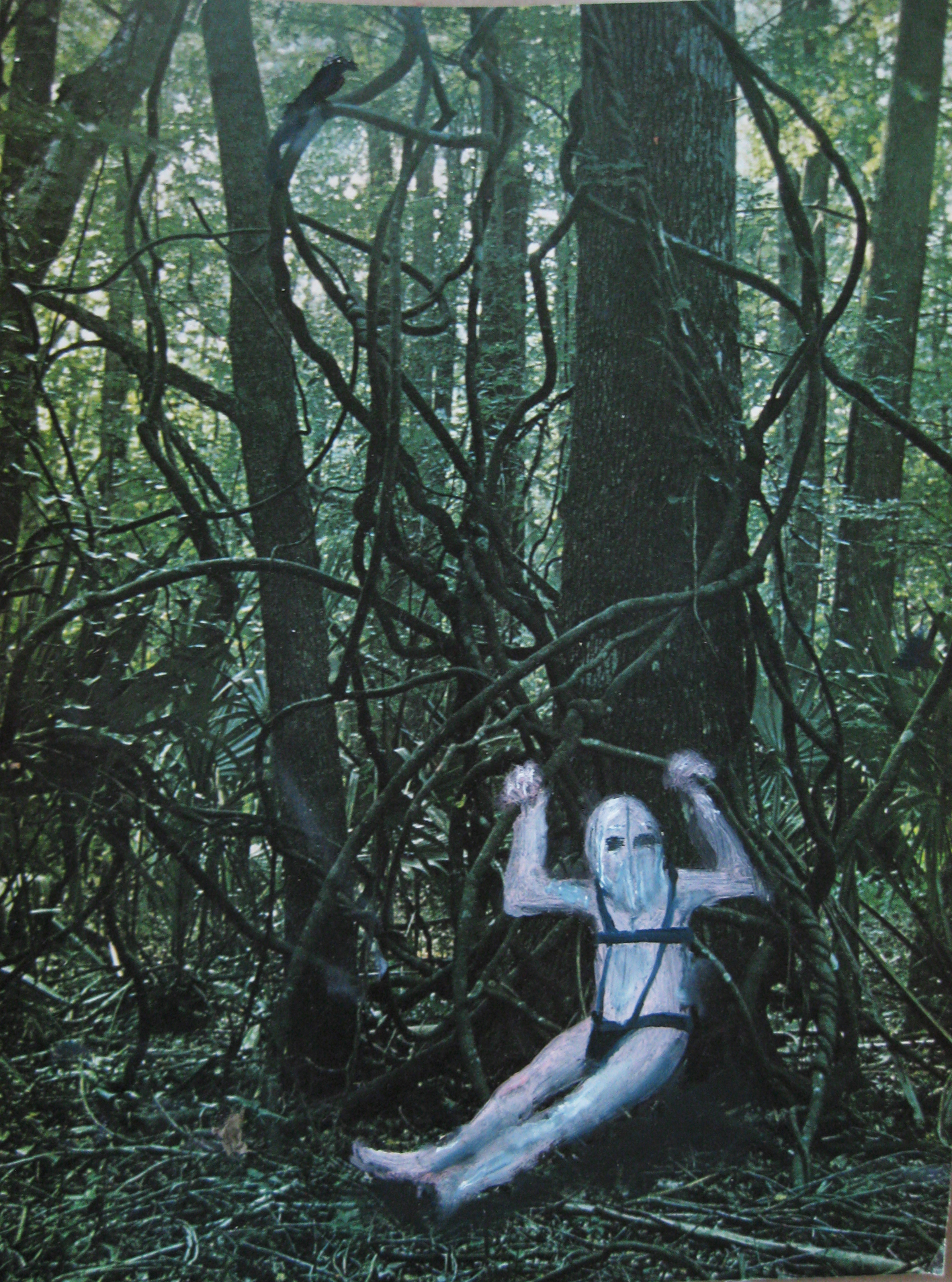
Thomas Braida, Lei, 2012.

Thomas Braida, Evviva il limone, 2011.

Thomas Braida, Senza titolo, 2012.
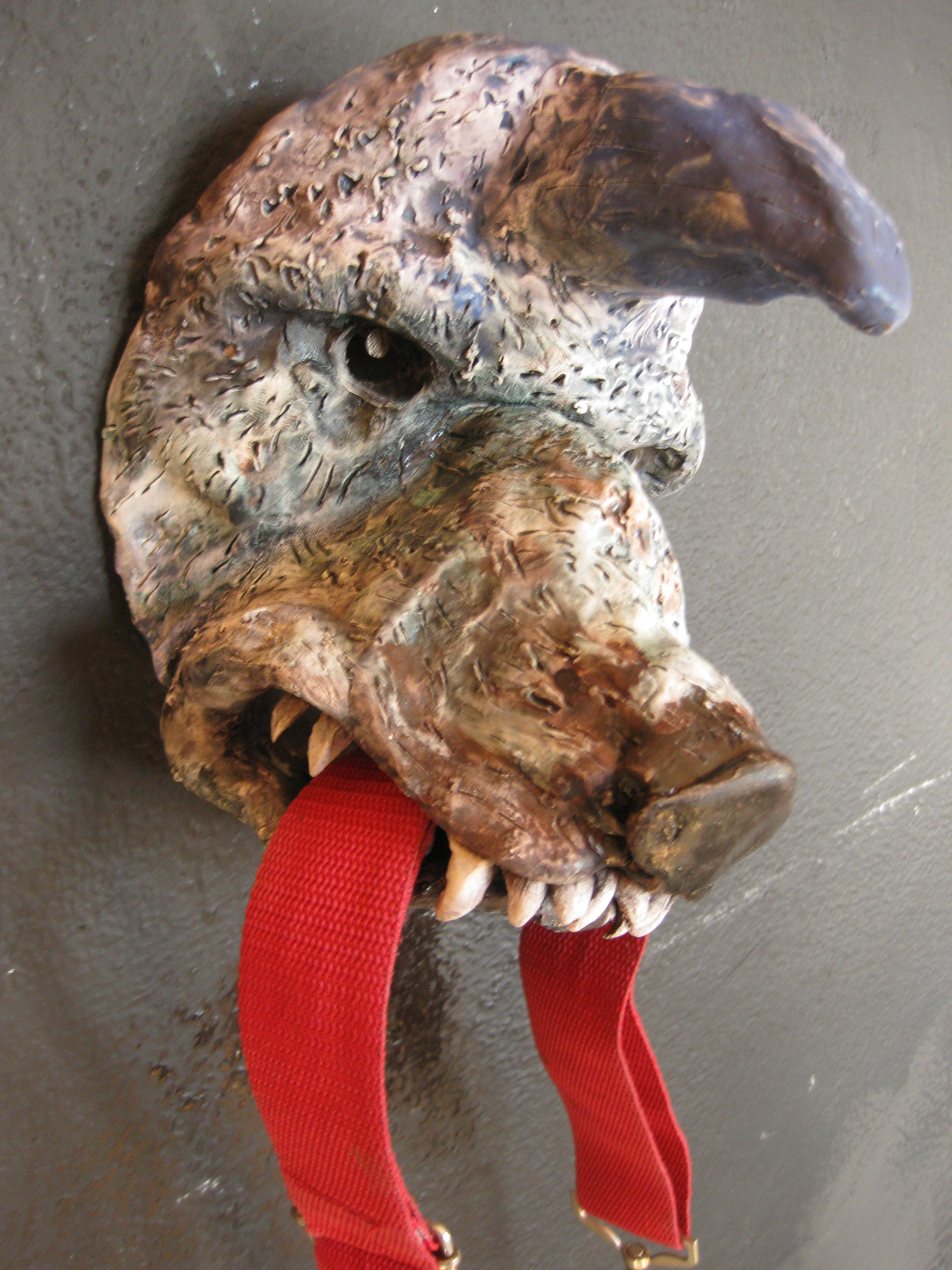
Thomas Braida, Cinghio, 2012.
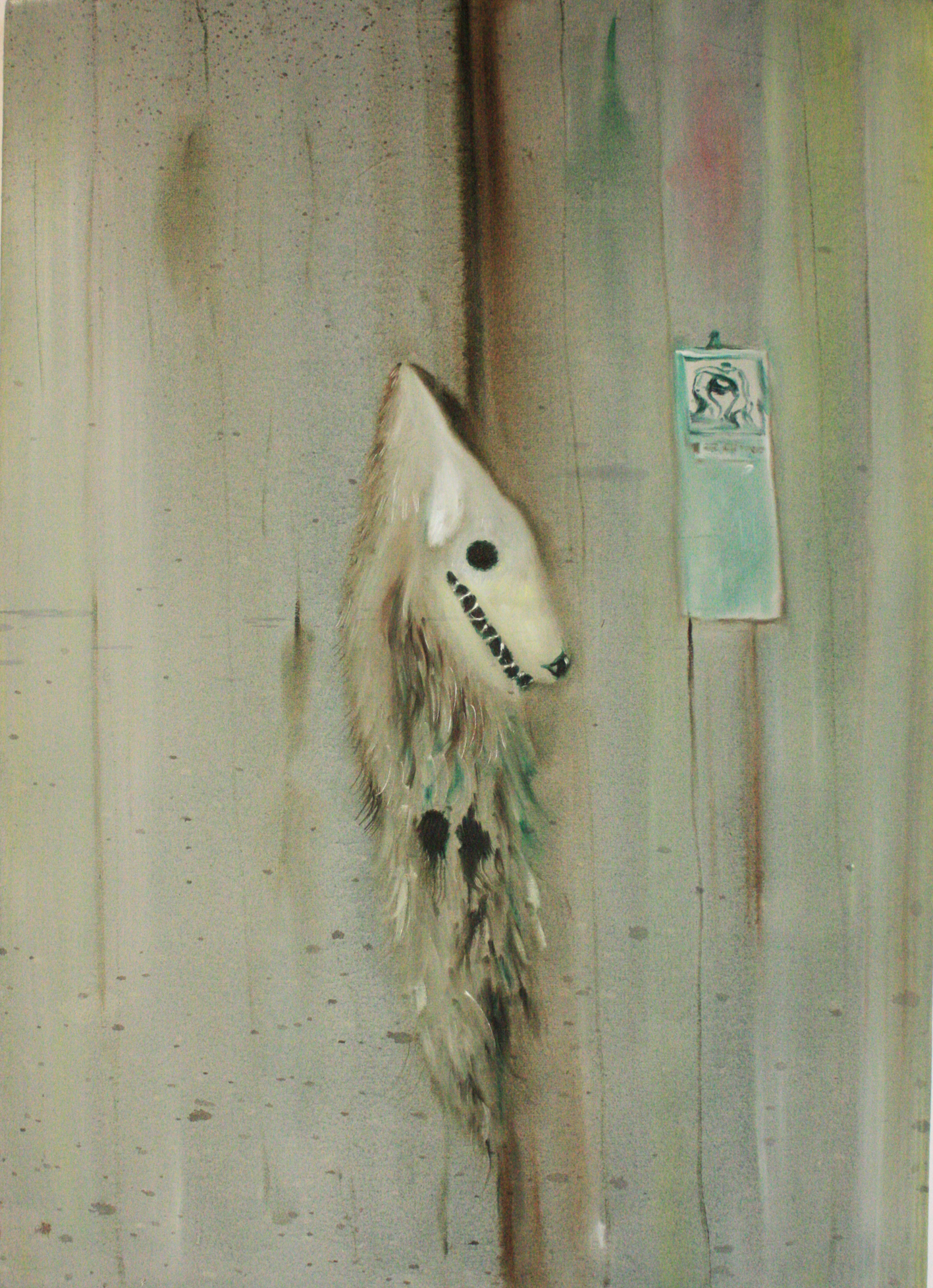
Thomas Braida, Pello al chiodo, 2012. Private collection.

Thomas Braida during the mounting of his intervention for Il Crepaccio, Milan, June 2012 .
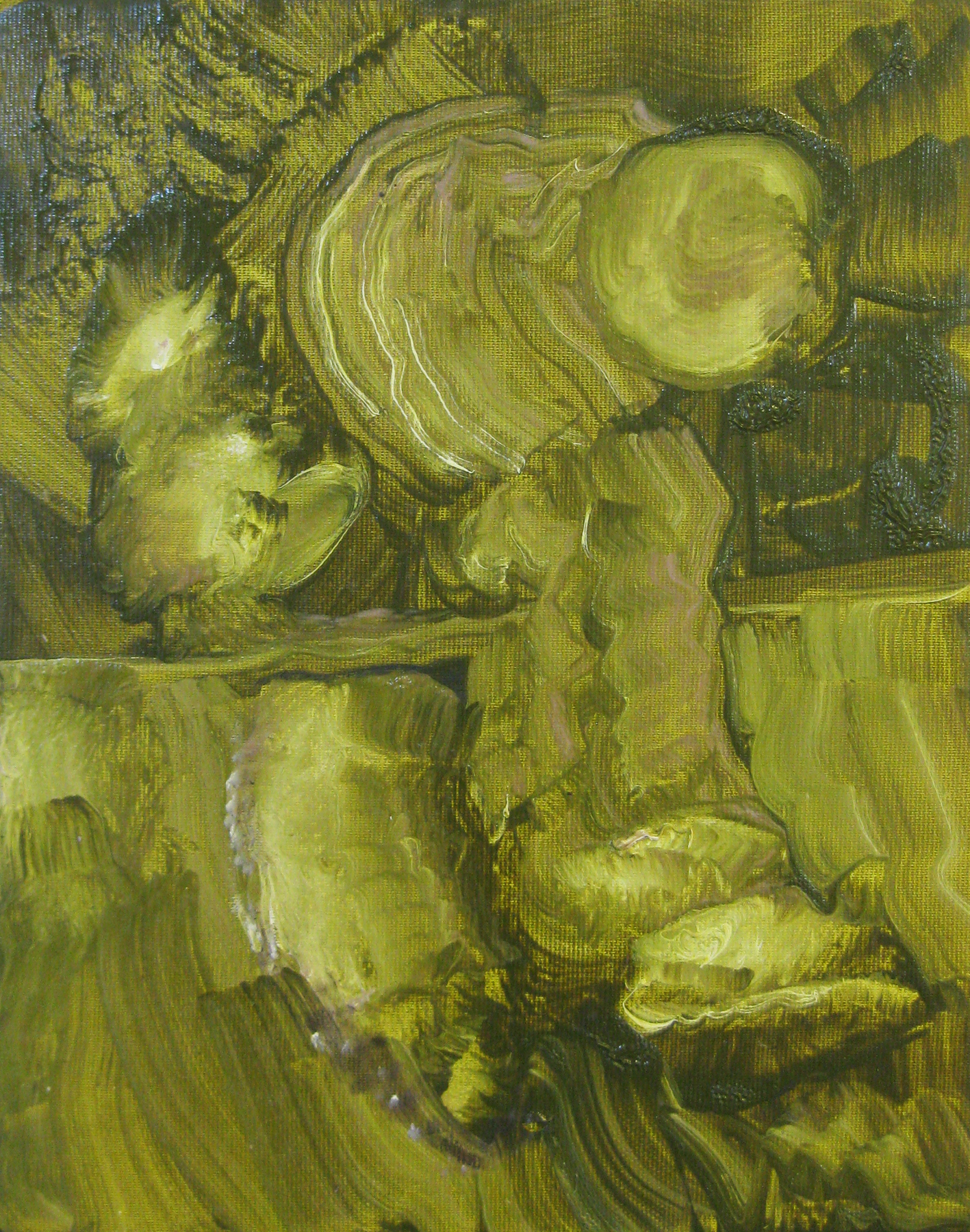
Thomas Braida, Pennellate a caso, 2012. Collezione privata / Private collection.
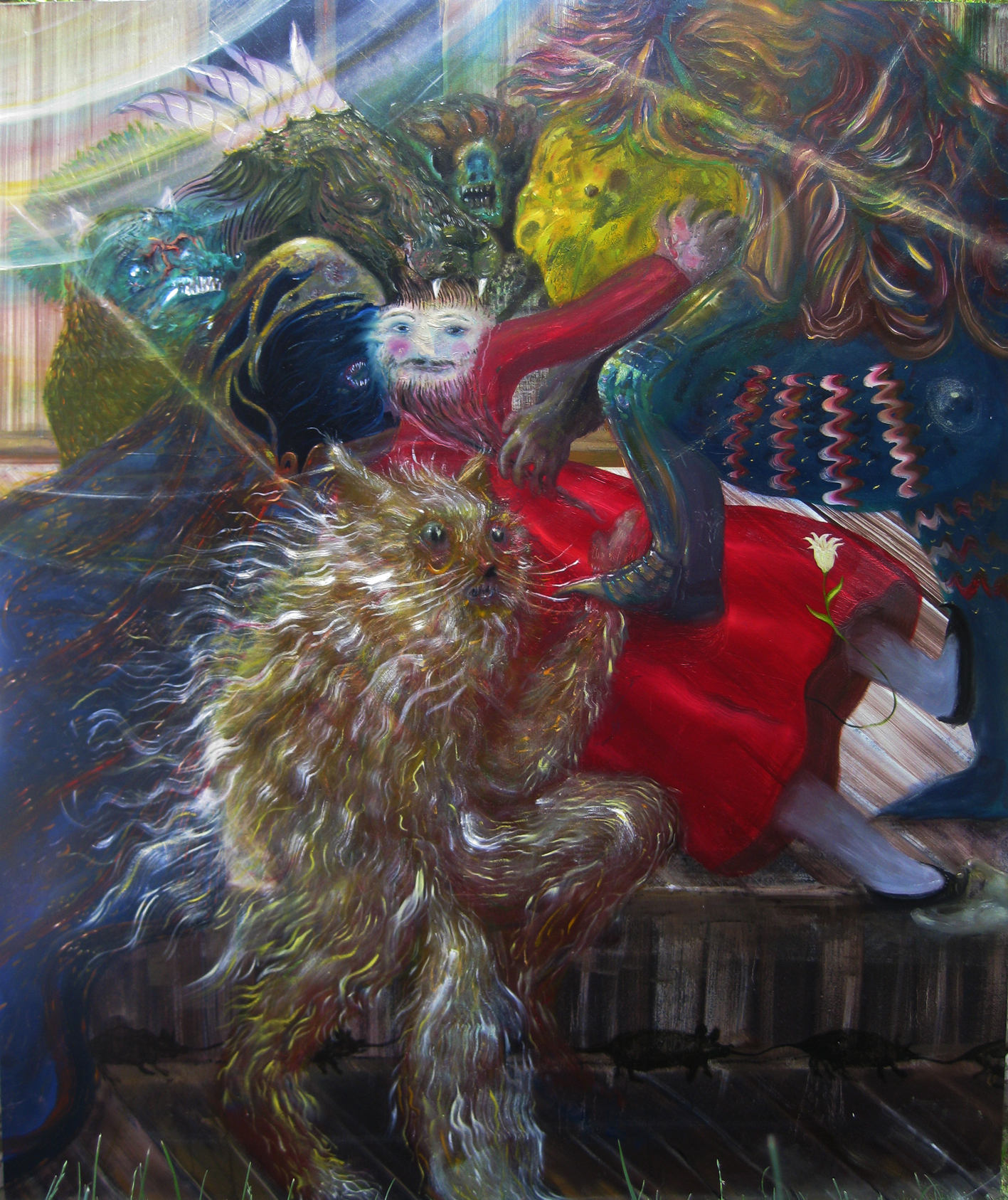
Thomas Braida, Le tentazioni di santantonio, 2012. Collezione privata.